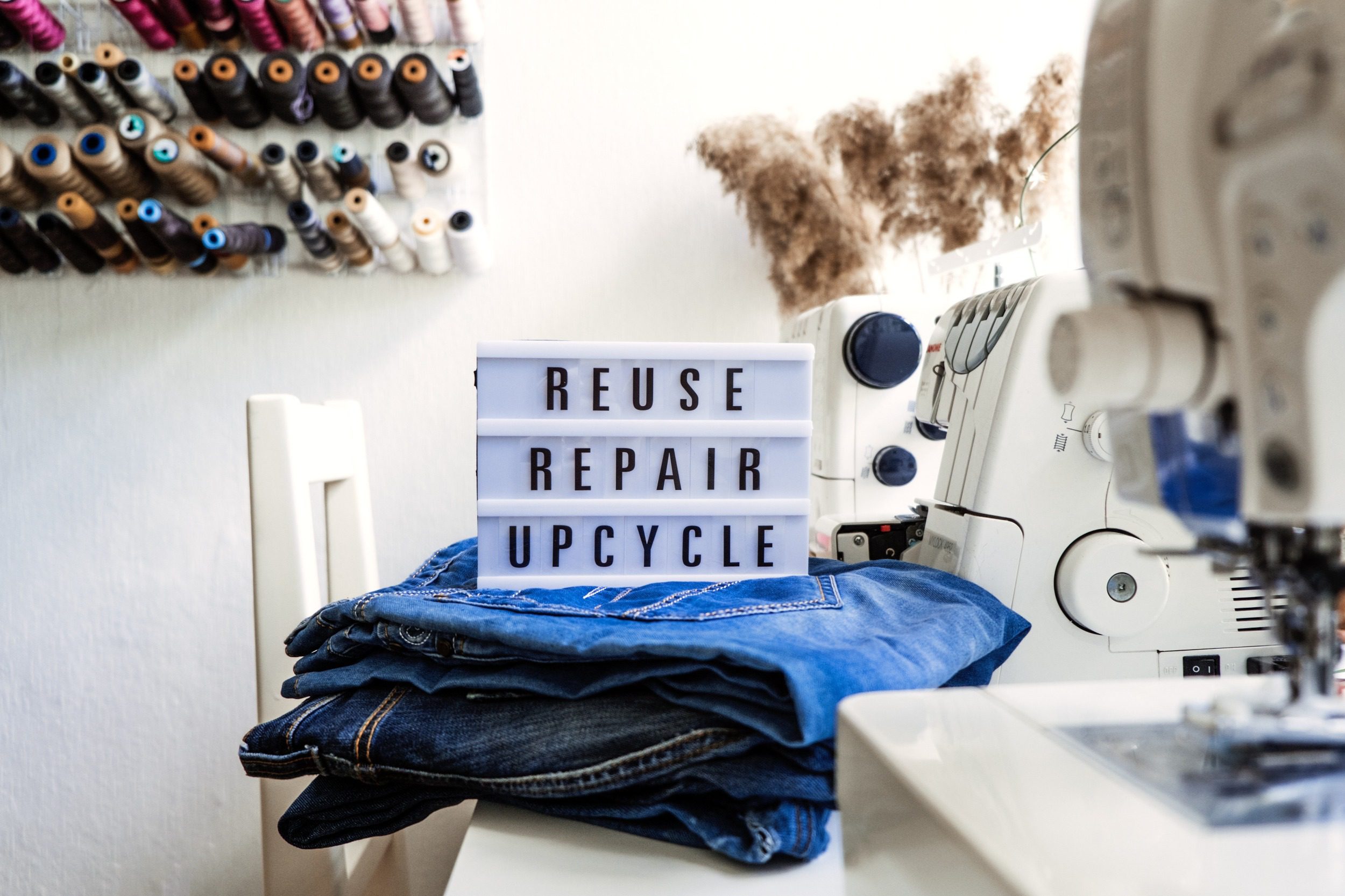What is ‘green shopping’?
 When people talk about ‘green shopping’, they are generally referring to a shopping behaviour that is more environmentally friendly and sustainable. This can involve a variety of practices, including:
When people talk about ‘green shopping’, they are generally referring to a shopping behaviour that is more environmentally friendly and sustainable. This can involve a variety of practices, including:
- Choosing products that are made from sustainable materials: This might mean looking for products that are made from natural, renewable materials, such as bamboo or cotton, instead of synthetic materials like plastic.
- Buying products with minimal packaging: Green shopping often involves choosing products that have minimal packaging or that come in packaging that is recyclable or biodegradable.
- Opting for eco-friendly products: This might involve choosing products that are certified as more eco-friendly. New EU energy labels were introduced in 2021 to give clearer information about the energy efficiency of a range of household items.
- Shopping locally: Green shopping also often involves shopping locally to reduce the environmental impact of transportation and to support local businesses.
- Using reusable products: Green shopping often involves choosing products that can be used multiple times, such as reusable bags, water bottles and food containers, rather than single-use products.
The overall goal of green shopping is to reduce the environmental impact of our shopping behaviour and promote sustainability in our daily lives.
Environmentally conscious shopping: Habits that are good for the planet AND your budget
Greener shopping isn’t just about finding the newest, coolest eco brands. It’s also about the habits we build and how much we consume. If you are looking to become a more conscious, eco-friendly shopper, the evidence shows that greener shopping is a step in the right direction. Why?
Supports sustainable businesses: When we choose to shop from businesses that are committed to sustainability, we are supporting a more sustainable economy. This encourages more businesses to adopt sustainable practices and helps to create a more sustainable future.
Health benefits: Many sustainable products are also healthier for us. For example, choosing organic foods or personal care products made from natural ingredients can reduce our exposure to harmful chemicals.
Saves money: Green shopping can also save us money in the long run. For example, investing in reusable products like water bottles or shopping bags can save money over time by eliminating the need to buy disposable products.
Encourages positive change: By making sustainable choices when we shop, we can send a message to businesses and manufacturers that we care about sustainability. This can encourage them to adopt more sustainable practices and create more sustainable products.
So if you’re asking “is green shopping a good thing?” then the answer is yes – it allows you to make more environmentally conscious choices that can help to create a more sustainable future not just for yourself, but for future generations.
The best places to buy and sell second-hand online
The process of making new items generates loads of waste, pollution and emissions. The good news is, the chances are that the perfect thing you’re looking for already exists – and others are looking to part with it. Second-hand markets have exploded in recent years, as people look to shop more sustainably. Reusing something is always more sustainable than buying it new. You can try charity and vintage shops, or opt for online marketplaces including Freecycle, Shpock and Vinted.
An honest comparison of popular online marketplaces: Pros and cons
Looking to buy or sell online? There are many apps and online marketplaces where you can buy and sell second-hand items. Here are a few of the most popular options, plus their biggest pro and con from an environmental standpoint:
| Marketplace | What does it do? | Biggest pro | Biggest con |
|---|
Developing eco-friendly shopping habits
Don’t throw away; repair and repurpose instead
Perhaps clothes aren’t your bag; you much prefer your gadgets. But always seeking out the latest ‘must-have’ tech comes at a price for the environment. So rather than always buying new electronics, why not consider purchasing refurbished or secondhand items? It’s a great way to reduce waste and save money.
There are lots of online marketplaces for refurbished electronics in the UK. Some of the most popular ones include:
- Amazon Renewed: This is Amazon’s refurbished electronics programme, which offers a wide selection of certified refurbished products with a minimum 1-year warranty.
- MusicMagpie: The online retailer that specialises in refurbished smartphones, tablets, laptops and gaming consoles. They offer a 12-month warranty on all products.
- eBay Refurbished Tech: eBay’s dedicated section for refurbished electronics, which includes a wide range of products such as smartphones, laptops and gaming consoles.
- Envirofone: Specialises in refurbished smartphones, offering a range of popular brands such as Apple and Samsung.
- TechTrade: A UK-based online retailer that offers a wide range of refurbished electronics, including laptops, tablets and gaming consoles.
These online marketplaces offer a range of certified refurbished electronics at a lower cost than buying new, which is a great option for those who want to reduce their environmental impact and save money on their purchases.
By adopting eco-friendly shopping habits such as this, you can reduce your carbon footprint and help protect the environment while still enjoying the benefits of modern electronics.
What are the benefits of buying refurbished electronics?
There are several reasons why people should consider buying refurbished electronics from an environmental point of view:
- Reducing electronic waste: Buying refurbished electronics gives these products a second life, which reduces the amount of electronic waste that ends up in landfills. Electronic waste is a significant environmental problem, as when it’s not properly disposed of, it can release toxic substances into the soil and water.
- Conserving natural resources: Refurbishing existing electronics requires less energy and resources than manufacturing new ones. By buying refurbished electronics, you are helping to reduce the demand for new products, which in turn helps to conserve natural resources.
- Reducing greenhouse gas emissions: The production and transportation of new electronics contribute to greenhouse gas emissions, which worsen the effects of climate change. Buying refurbished electronics reduces the need for new products to be manufactured, which in turn reduces the greenhouse gas emissions associated with the production and transportation of those products.
- Saving energy: Refurbished electronics are often more energy-efficient than older models, which can help to reduce your energy consumption and lower your carbon footprint.
Buying refurbished electronics including mobile phones and laptops is a great way to reduce your environmental impact and contribute to a more sustainable future.
Avoiding unnecessary purchases: More tips on how to lessen your shopping impact on the environment
You can take action today to reduce your ecological footprint.
- Assess your needs: Before making any purchase, take the time to assess whether you really need the item you are considering buying. This can help to reduce the number of unnecessary purchases you make and reduce your overall environmental impact.
- Choose durable and high-quality products: Look for products that are well-made and designed to last. Choosing durable products can help reduce the need for frequent replacements, which in turn helps to conserve resources and reduce waste.
- Buy second-hand: Consider buying second-hand items whenever possible. This can be a great way to reduce waste and save money at the same time. Look for second-hand shops in your area or check out online marketplaces for second-hand goods.
- Look for eco-friendly and sustainable products: When purchasing new items, look for products that are eco-friendly and sustainable. This can include products that are made from natural or recycled materials, or that are certified as sustainable by reputable organisations.
- Support local businesses: Whenever possible, support local businesses that prioritise sustainable practices. This can help to reduce the environmental impact of shipping and transportation and support your local economy at the same time.
- Reduce packaging waste: Choose products that come with minimal packaging, or that are packaged in eco-friendly materials such as cardboard or paper. You can also bring your own reusable bags and containers to stores to reduce the amount of packaging waste generated by your purchases.
- Avoid single-use items: Single-use items such as plastic water bottles, straws and utensils can have a significant environmental impact. Choose reusable items instead, such as a refillable water bottle or a set of metal utensils to carry with you.
- Look for energy-efficient appliances: When purchasing appliances or electronics, choose items that are designed to be energy-efficient. This can help to reduce your energy consumption and lower your overall carbon footprint.
- Be aware of greenwashing: Greenwashing is when companies make false or misleading claims about the environmental benefits of their products. Do your research to ensure that the products you are purchasing are truly eco-friendly.
- Make a plan for responsible disposal: When it’s time to dispose of an item, make sure to do so in a responsible way. Look for recycling programmes in your area or consider donating items to second-hand shops or charities that specialise in keeping unwanted or broken items out of landfill.
By following these tips and making informed purchasing decisions, you can make a significant impact on the environment and reduce your overall environmental footprint.
Remember: Shopping doesn’t have to cost the Earth.
For ideas on other green lifestyle choices see our lowdown on green travel options.
FAQs: Got a burning question about green shopping? We’ve got the answers…
? What makes a product “green”?
A “green” product is one that has been manufactured or produced using environmentally friendly materials, processes and practices that minimise harm to the planet. These products may also have features that promote sustainability and conservation.
? How can I tell if a product is eco-friendly or sustainable?
You can look for eco-friendly or sustainable certifications. These certifications indicate that the product meets specific standards for sustainability, environmental impact or social responsibility.
You can also research the company and its practices or look for specific product attributes, such as organic, biodegradable or recycled materials.
? What are the most important things to look for when trying to shop sustainably?
Look for environmentally friendly materials, low-impact manufacturing processes, fair labour practices and products that are designed to be durable and long-lasting.
? How can I reduce packaging waste when I shop?
You can reduce packaging waste by choosing products with minimal packaging, bringing your own reusable bags and containers, buying in bulk and choosing products with eco-friendly packaging materials.
? How can I support local businesses while also being environmentally conscious?
You can support local businesses by shopping at farmers’ markets, purchasing products made locally and choosing small businesses that prioritise sustainability and eco-friendly practices.
? What are some good alternatives to single-use products, like plastic bags or water bottles
Good alternatives to single-use products include reusable bags, water bottles and containers, cloth napkins and beeswax wraps for food storage.
? What are some easy changes I can make to my shopping habits to be more environmentally friendly?
Some easy changes include bringing your own reusable bags and containers, shopping locally and choosing products with eco-friendly packaging materials.
? How can I encourage others to shop sustainably?
You can lead by example, share information and resources and promote sustainable shopping practices through social media or community events.



